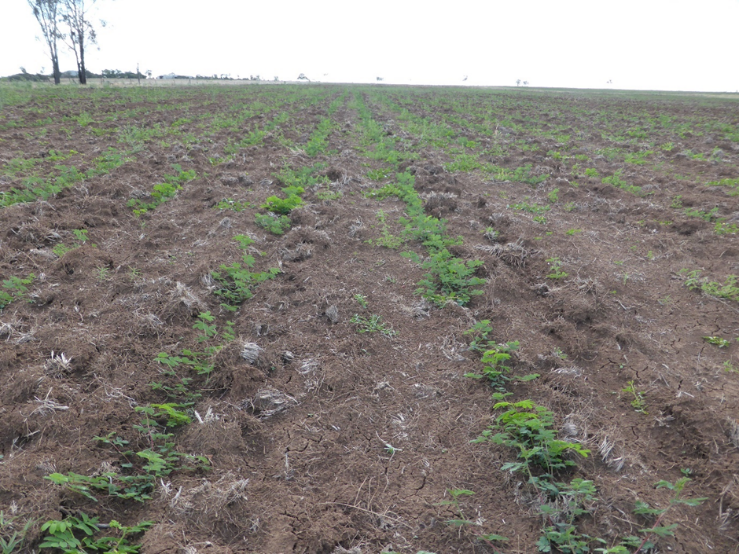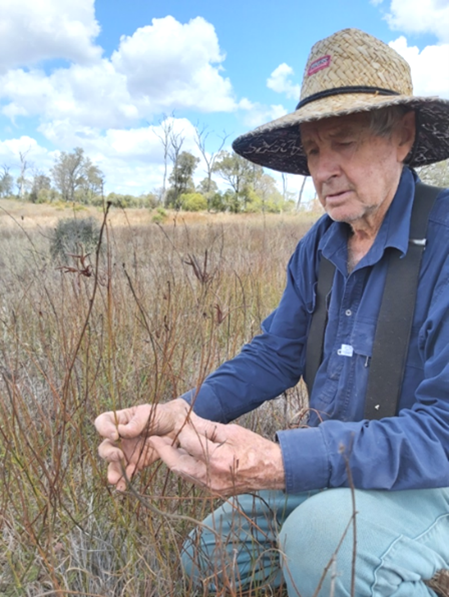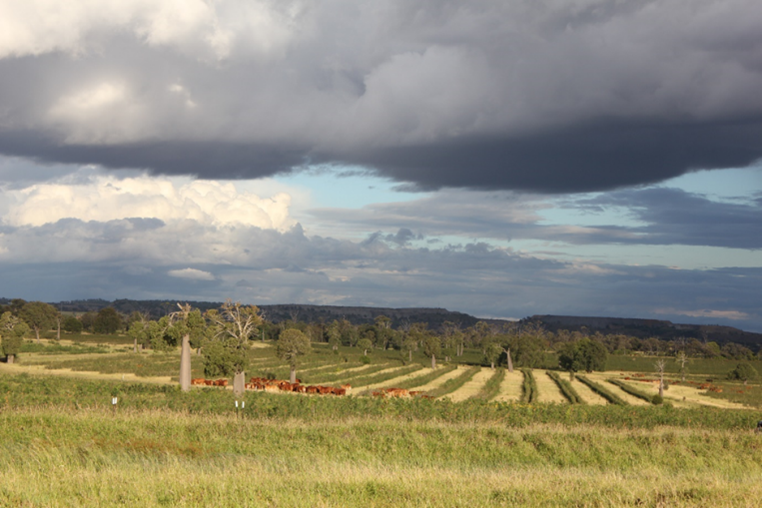Pasture legumes form the basis for beef production
With decades of experience in pasture improvement, the Anderson family near Theodore have tried and tested a number of tropical legumes including leucaena, desmanthus, stylos and more. In this case study, Owen Anderson shares his experiences and tips for successful establishment and management, and explains the benefits to having legume-grass pastures in their beef producing operation.
| Names: | Owen, Hazel, Lorraine and Fiona Anderson |
| Property: | 'Woodleigh', Theodore, Central Queensland |
| Existing pastures: | Mix of sown and native pasture. Buffel is the dominant sown pasture and black speargrass and forest bluegrass are the main native species |
| Soils and land types: | Sandy loam to cracking clay. Brigalow and bottle tree scrub hills and alluvial loam river flats |
| Enterprise: | Breeding, growing and finishing beef cattle |
A search for alternatives
The Anderson family have owned and managed ‘Woodleigh’ near Theodore in Central Queensland for over 100 years. Sisters, Lorraine and Fiona manage the property with parents Owen and Hazel providing support.
Initially the pastures on ‘Woodleigh’ were productive and enabled all cattle to be grown and finished on grass-only pastures. Oats was introduced to boost cattle diet and liveweight gain during winter when tropical grasses were mature and low-quality. However, the irregularity of rainfall to enable sowing, poor growth during drier seasons, and rust in wet winters, meant oats became an unreliable winter forage option. Owen started to look for alternative pasture options to maintain cattle performance without the effort and cost of annual forages, and he was advised that perennial tropical legumes might provide a solution.
Initial pasture legume sowing
The first legumes were sown in 1994. Species sown included butterfly pea, desmanthus, Seca shrubby stylo, siratro and Wynn roundleaf cassia, sown together with Biloela and Gayndah buffel grass, into ex-forage paddocks.
The following year, desmanthus and Seca shrubby stylo, were incorporated into existing grass-only paddocks during blade ploughing for woody regrowth control. Additional paddocks were sown in other years with similar pasture mixes.

Owen continued to investigate perennial legume options. He eventually came across success that other graziers were having with leucaena – a perennial shrub legume – that was performing well in the central Queensland region.
In 2002 the first stand of leucaena was planted into a paddock that had been used for oats. Owen observed that his cattle “did just as good on leucaena as they did on oats”, without needing to be sown every year. More paddocks were subsequently sown to leucaena, and to other legumes such as Caatinga stylo, based on recommendations from Queensland Department of Agriculture and Fisheries staff and other reputable sources.
Successful legume establishment
Wanting to ensure successful establishment, the Anderson’s have followed the recommended establishment and management practices for tropical pasture legumes. Owen stresses the need to establish legumes properly. Owen says:
“Prepare your seedbed, control weeds, and fallow to accumulate soil moisture.”
At ‘Woodleigh’, weed control during the fallow time is achieved with cultivation using either chisel plough or offset discs, or by using herbicides. When it comes to his leucaena, the strips to be sown are ripped first.
The sowing operation is carefully considered. The Anderson’s use a precision planter with disc openers and press wheels. This same planter has been used for small-seeded legumes such as Caatinga stylo and desmanthus in other parts of the property.
As for sowing rate, when sowing leucaena, the Anderson’s use quality, high germination seed and sow it at a rate of 2 kg/ha.

Sowing occurs only once sufficient moisture has accumulated. One rule of thumb is to ensure 50 cm depth of moist soil prior to sowing.
In the Theodore district, the planting window for summer-growing legumes is between November and February. At ‘Woodleigh’, there have been years where planting has been delayed until the following year, due to insufficient stored soil moisture at the end of the planting window.
When it comes to establishing grass between leucaena rows, the Anderson’s have found it especially challenging in paddocks where the leucaena rows are planted close together (6 m row spacing). In more recent leucaena plantings, row spacing has been widened to 8 m.
To date, no fertiliser has been used during pasture establishment, and legume seed is inoculated with rhizobium to ensure nitrogen fixation. Post-emergent weed control is undertaken to ensure the young legumes get the best chance at establishing successfully.
Legume grazing management
Initially, Owen aimed for good leucaena plant establishment with a high plant density. However, in recent times the family has relaxed this target knowing that some gaps in their leucaena rows make mustering a little easier while still sustaining high beef production. The first graze occurs when the leucaena plants are about shoulder height (approx. 1.5 m). Other legumes are grazed once they are well established (6 to 12 months after sowing depending on seasonal conditions) and once they have set seed to ensure on-going longevity in the pasture.
Overall, a conservative management approach is utilised to ensure good establishment and long-term performance of legume pastures.

Multiple benefits
Incorporating perennial legumes into sown grass pastures has provided multiple benefits. Cattle performance has markedly improved with finished stock being sold about 6 months earlier compared to when cattle were finished on grass-only pastures. A key outcome of the Anderson’s production system is high carcass quality. The Anderson’s obtain a high percentage of MSA grading and all male cattle dress at over 300 kg carcass weight.
Legume-grass pastures provide flexibility with variable seasons to target a range of marketing options and maximise value for every animal sold. Some of these options include turning off grown cattle into feedlots (mainly cull females), and finished cattle to meatworks (steers and cull cows).
The Anderson’s are still planning to develop more paddocks to legumes. The natural spread of shrubby legumes like desmanthus and stylos into unsown paddocks has been variable and slow, however the family believe that allowing the seed to spread could be a potential way to get legumes through some of the ‘rougher’ paddocks.
Top tips with pasture legumes
The success of tropical legumes at ‘Woodleigh’ is a testament to the hard work and attention to detail to ensure successful legume establishment. Key to their success has been to get advice from reputable sources and follow the recommended agronomic guidelines.
Key points include:
- Don’t take too many shortcuts.
- Preparation is essential especially for storing soil moisture before planting and weed control.
- Don’t forget about grasses, they are important too!
Acknowledgement: This project is jointly funded through Meat and Livestock Australia and Department of Agriculture and Fisheries.
© State of Queensland (Department of Agriculture and Fisheries).
Compiled by Stuart Buck, Pasture Agronomist, Department of Agriculture and Fisheries, 2020.